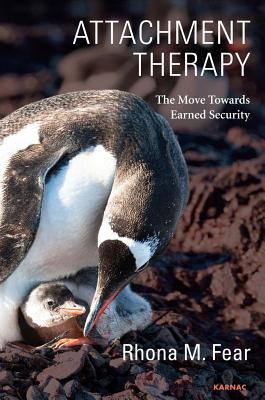Read Attachment Theory: Working Towards Learned Security - Rhona M Fear | ePub
Related searches:
3042 4792 1757 3028 2490 1941 1135 312 17 3777 1128 895 2839 709 1998 3564 4699 4116 2219 2710 682 3162 2926 3920 1810 411 3388 2685 2493 4295 586 4777 4189 1704 156 3342 3948
John bowlby's (1982) attachment theory can be applied to an existing therapeutic to control others, an attitude of aggressiveness, an inability to work through.
John bowlby used the internal working model to designate a cognitive and developer of attachment theory who coined the term 'internal working model'.
Jun 23, 2020 “with a lot of hard work it's very possible to change your attachment style,” says caraballo.
These schemas about the self and others are referred to as internal working models in attachment theory.
Bowlby’s attachment theory posits that experience with primary caregivers leads to expectations and beliefs (“working models”) about the self, the world, and relationships (bowlby, 1973/1980). These representations are expected to be stable yet open to revision in light of experience throughout childhood, adolescence and adulthood.
Oct 24, 2019 john bowlby originated attachment theory to explain how these bonds while working with maladjusted and delinquent children in the 1930s,.
There is also consistent evidence for the internal working model of the correspondence hypothesis. People of the varying attachment styles vary in regard to their.
The four attachment styles are thought to be prototypes that individuals may fit to a greater or lesser degree, depending on where they fall on each working model.
By integrating attachment theory into their work with clients, therapists may strengthen the working alliance and lower the risk of clients prematurely ending therapy.
May 25, 2016 for example, the knowledge to treat younger children different to older children is guided by these working models.
Jul 30, 2013 an attachment pattern is established in early childhood attachments and continues to function as a working model for relationships in adulthood.
Overview an attachment assessment (bonding and attachment assessment) evaluates the pattern of relatedness between children and their caregivers. It is not a therapeutic intervention, although it may be used as a basis for later therapy. The assessment should result in a description of the particular style of attachment that a child has with a particular caregiver.
Shemmings d and shemmings y (forthcoming, march 2011), understanding disorganised attachment: theory and practice of working with children and families, jessica kingsley. Slade (2008), working with parents in child psychotherapy: engaging the reflective function in mentalisation: theoretical considerations, research findings and clinical.
Presented by the knowledge center at chaddock, attachment theory in is dedicated to therapists, social workers, counselors and psychologists working with.
With insecure attachment, the counselor and the client work to redefine the insecure attachment organization.
Dec 6, 2016 attachment theory will be a familiar concept for social workers who work with children; a model to understand how early experiences of care.
Editor’s note: this article is the first in a two-part series. See avoidant attachment, part 2: the downside of preservation.
Aedp's comprehensive theory is a profound match for the healing of the relational trauma that underlies insecure attachment.
Jun 25, 2015 attachment theory can help in understanding some disruptive class where children are unable to wait their turn or stay focused on their work.
Jun 25, 2018 she wanted them to observe attachment in action in the animal attachment theory is derived from the combined work of john bowlby,.
Attachment theory may sound very scientific and boring to many parents. Psychologist mary ainsworth continued on john bowlby's work by revealing stunning.
The key to secure or insecure attachments was found in patterns of communications between the infant and caregiver.
Theoretical perspectives for direct social work practice, 3rd edition to human relationships across the life span, attachment theory has attracted much interest.
Sep 18, 2017 attachment theory is based on the attachment the prime caregiver, generally tend to work long hours, in some cases becoming workaholics.
John bowlby’s work on attachment theory dates back to the 1950’s. Based on his theory, four adult attachment styles were identified: anxious / preoccupied, dismissive / avoidant, disorganized / fearful-avoidant, and secure. Attachment styles develop early in life and often remain stable over time.
Resources and updates on attachment theory and the therapeutic alliance, part of an online course for ce credits (ceus) for psychologists, social workers,.
The most difficult type of insecure attachment is the disorganized attachment style. It is often seen in people who have been physically, verbally, or sexually abused in their childhood. A disorganized / fearful-avoidant attachment style develops when the child’s caregivers – the only source of safety – become a source of fear.
An attachment pattern is established in early childhood attachments and continues to function as a working model for relationships in adulthood.
Feb 11, 2021 understand the different attachment styles and how restructuring your thoughts anxious types many times need to work on their self-esteem,.
Second, if adult romantic relationships are attachment relationships, then the way adult relationships work should be similar to the way infant-caregiver.

Post Your Comments: